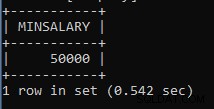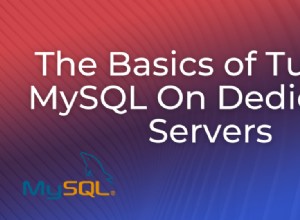Ho fatto esattamente questo su un certo numero di progetti
Ad esempio, ho una relazione uno a molti da ASPNetUsers a Notifications. Quindi nella mia classe ApplicationUser all'interno di IdentityModels.cs ho
public virtual ICollection<Notification> Notifications { get; set; }
La mia classe Notifiche ha il contrario
public virtual ApplicationUser ApplicationUser { get; set; }
Per impostazione predefinita, EF creerà quindi un'eliminazione a cascata da Notification ad AspNetUsers che non voglio, quindi l'ho anche nella mia classe Context
modelBuilder.Entity<Notification>()
.HasRequired(n => n.ApplicationUser)
.WithMany(a => a.Notifications)
.HasForeignKey(n => n.ApplicationUserId)
.WillCascadeOnDelete(false);
Ricorda solo che la definizione di AspNetUSers è estesa nella classe ApplicationUser all'interno di IdentityModels.cs che viene generata per te dallo scaffolding degli studi visivi. Quindi trattalo come qualsiasi altra classe/tabella nella tua app
AGGIORNAMENTO:ecco alcuni esempi di modelli completi
public class ApplicationUser : IdentityUser
{
[StringLength(250, ErrorMessage = "About is limited to 250 characters in length.")]
public string About { get; set; }
[StringLength(250, ErrorMessage = "Name is limited to 250 characters in length.", MinimumLength=3)]
public string Name { get; set; }
public DateTime DateRegistered { get; set; }
public string ImageUrl { get; set; }
public virtual ICollection<Notification> Notifications { get; set; }
public async Task<ClaimsIdentity> GenerateUserIdentityAsync(UserManager<ApplicationUser> manager)
{
// Note the authenticationType must match the one defined in CookieAuthenticationOptions.AuthenticationType
var userIdentity = await manager.CreateIdentityAsync(this, DefaultAuthenticationTypes.ApplicationCookie);
// Add custom user claims here
return userIdentity;
}
}
public class Notification
{
public int ID { get; set; }
public int? CommentId { get; set; }
public string ApplicationUserId { get; set; }
public DateTime DateTime { get; set; }
public bool Viewed { get; set; }
public virtual ApplicationUser ApplicationUser { get; set; }
public virtual Comment Comment { get; set; }
}
}




